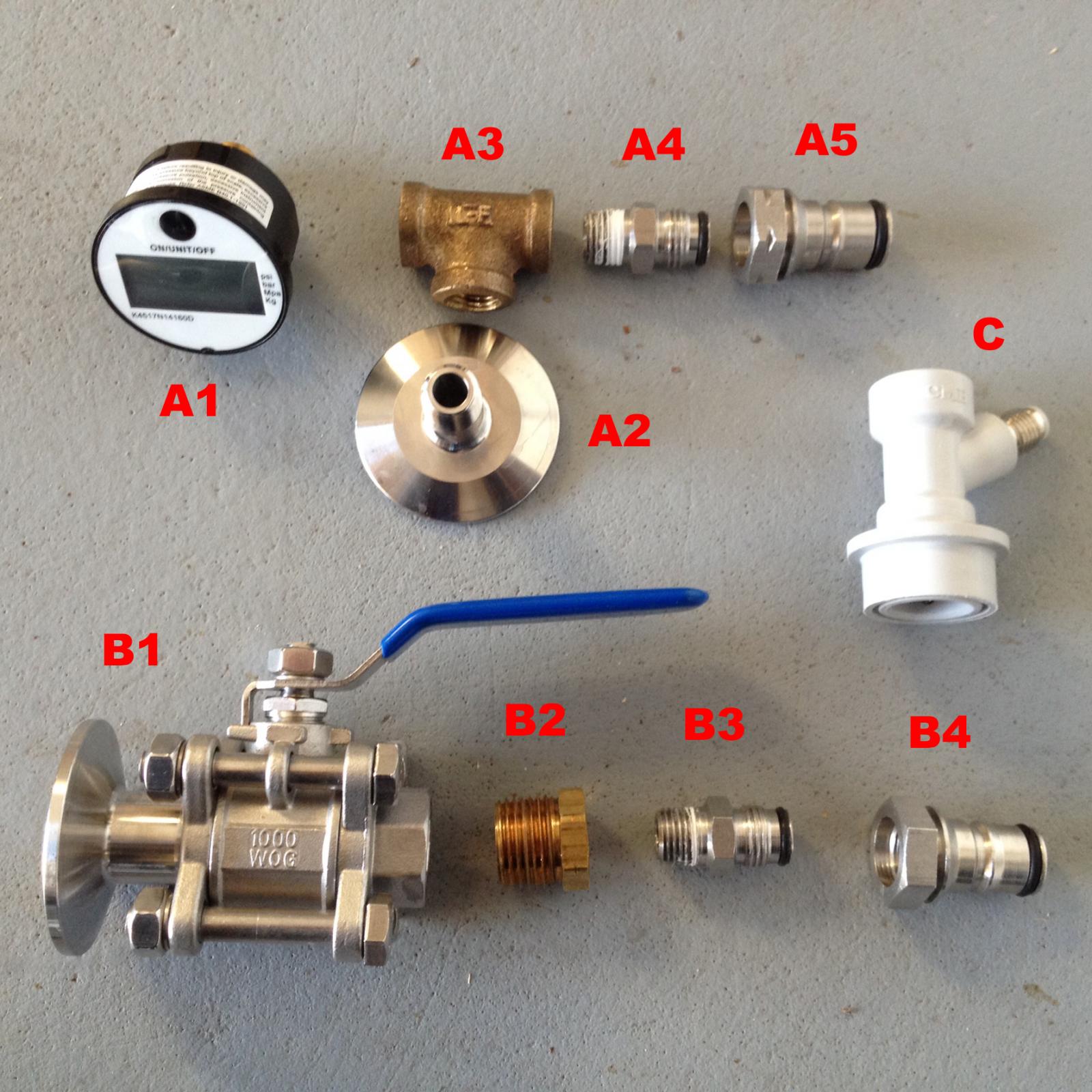philipCT
Brewniversity student
- Joined
- May 10, 2013
- Messages
- 771
- Reaction score
- 171
Hi all. I've been reading various posts, including Matt Chrispen's excelentblog entry on this (http://accidentalis.com/archives/735) and I've come up with my own spin on Matt's design.
I thought Matt's design was really cool because it incorporated it's own low pressure gauge and dedicated regulator. As I was reading up on the regulator, it seems that it did not incorporate any kind of over-pressure relief valve, so I wanted to add that. I also wanted to do this with fittings instead of hose so it would be easier to manage.
My conical is the same that Matt uses and has a 1-1/2" Tri-clover fitting on top. The rig pictured is used only to pressurize the conical safely. Safety is critical here because, as Matt learned first-hand, you can blow these fermenters if you over-pressure them, and 5psi is the max recommended.
Here are some photos. If there's interest, I'll detail part numbers. I also video'd a quick dry-run/demo: http://youtu.be/y0SK4aqJL5w
I've used it once only so far, and found that 1psi was plenty to move the beer quite quickly. It worked perfectly and it was so fast the fun was over before I knew it. One other thing I noticed was that when I wanted to rotate the racking arm, and loosened it's tri-clover clamp so I could do that, beer started leaking out of the clamp fitting. That never happens when it's not pressurized. It's not big deal - you just retighten the clamp. I ony lost an ounce or so. I just thought t was interesting and probably bodes against using any more pressure than necessary.
I also not that Matt says he uses this as a replacement for the blowoff tube when he starts to cold crash. This is to avoid intake of any O2. I hadn't thought of that use but it sounds like a great idea.



I thought Matt's design was really cool because it incorporated it's own low pressure gauge and dedicated regulator. As I was reading up on the regulator, it seems that it did not incorporate any kind of over-pressure relief valve, so I wanted to add that. I also wanted to do this with fittings instead of hose so it would be easier to manage.
My conical is the same that Matt uses and has a 1-1/2" Tri-clover fitting on top. The rig pictured is used only to pressurize the conical safely. Safety is critical here because, as Matt learned first-hand, you can blow these fermenters if you over-pressure them, and 5psi is the max recommended.
Here are some photos. If there's interest, I'll detail part numbers. I also video'd a quick dry-run/demo: http://youtu.be/y0SK4aqJL5w
I've used it once only so far, and found that 1psi was plenty to move the beer quite quickly. It worked perfectly and it was so fast the fun was over before I knew it. One other thing I noticed was that when I wanted to rotate the racking arm, and loosened it's tri-clover clamp so I could do that, beer started leaking out of the clamp fitting. That never happens when it's not pressurized. It's not big deal - you just retighten the clamp. I ony lost an ounce or so. I just thought t was interesting and probably bodes against using any more pressure than necessary.
I also not that Matt says he uses this as a replacement for the blowoff tube when he starts to cold crash. This is to avoid intake of any O2. I hadn't thought of that use but it sounds like a great idea.



Last edited:




